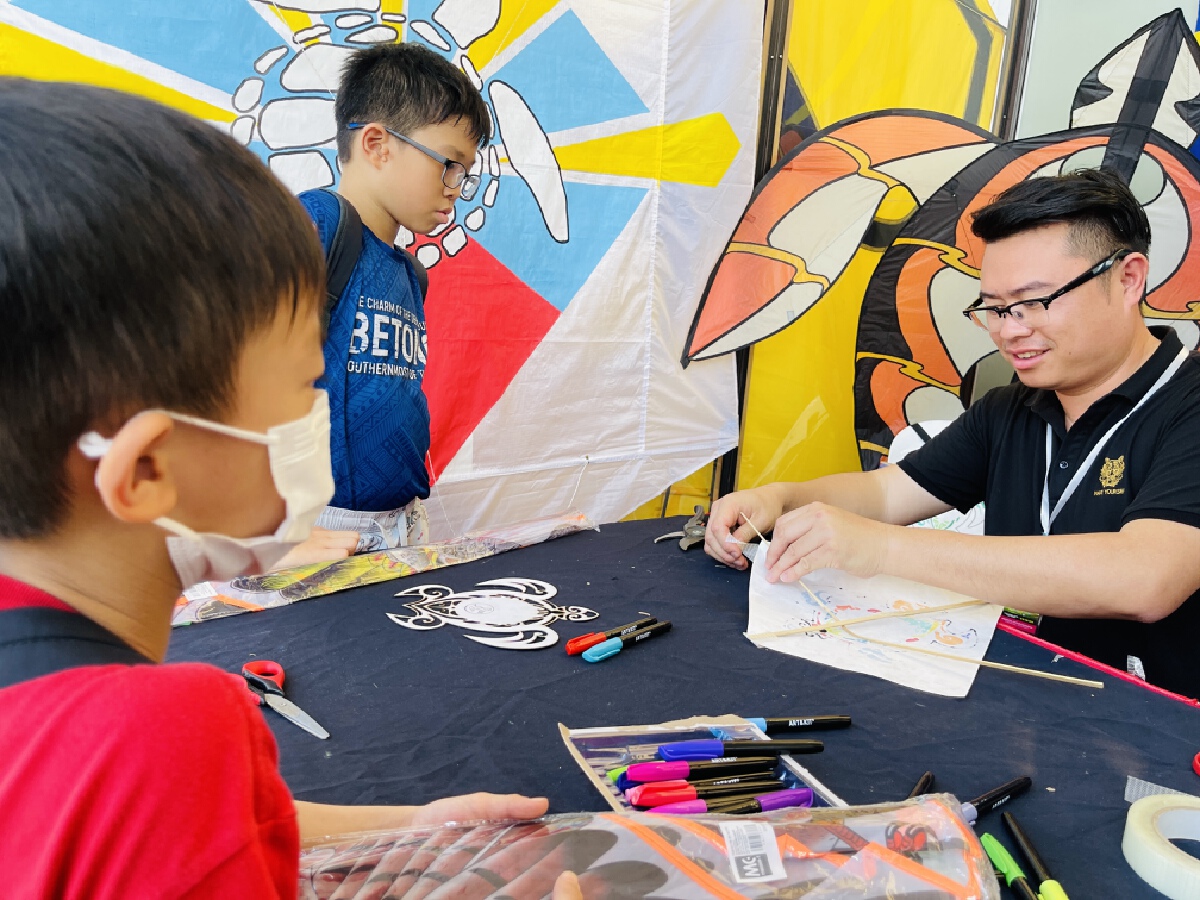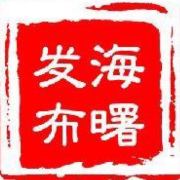“For the second time, I’ve brought Haishu-made kites overseas. Compared to last time, I’m more relaxed and able to engage in deeper exchanges with kite enthusiasts from around the world,” said Hu Jinwei, a certified national kite judge and science teacher at Gulin Central Primary School, during a phone interview on February 17th from Malaysia. He was attending the 27th Pasir Gudang World Kite Festival.

Hu Jinwei at the festival with local people
Last summer, Hu and his students crafted various types of kites and travelled to the Varna International Kite Festival in Bulgaria. There, he showcased kites with distinct Ningbo characteristics and offered them as gifts, using kite culture as a bridge to share Chinese traditions with international friends.
This year, Hu’s destination was Johor, Malaysia, where the renowned kite festival has been held annually since 1995. The 2025 event brought together over 200 kite masters from 66 countries, along with more than 300 Malaysian participants, for a celebration of kite flying, creativity, and competition.
Hu's schedule in Malaysia included kite flying, exhibition booths, and kite battles. On the second day of the event, he and fellow enthusiasts from cities like Shanghai and Wuhan flew culturally themed kites such as the “Panda Kite” and “Soft Ningbo Kite.” These drew crowds of curious onlookers, many of whom had never seen Chinese-style kites before. “The response was overwhelming,” Hu shared. “People were eager to learn how to make them, and we were happy to teach.”
To promote Ningbo's kite culture, Hu hand-carried nearly 700 kite-themed creative items to Malaysia. These included his original “Paper Kite Wind Chimes,” popular kite-themed badges, and dynamic kites often flown by students back home, many of which were handmade by Hu’s pupils. At the festival’s cultural exhibition, Hu gifted these items to international guests, inviting them to visit Ningbo and experience the city’s vibrant kite culture firsthand. The gifts were warmly received, with some guests even writing thank-you notes and signing autographs for Haishu students.

Hu Jinwei with the students
Hu also led kite-making workshops for local children, guiding them through the full process—cutting, painting, assembling, and flying. “For many, it was their first time. Though they were unfamiliar with the techniques, they were very enthusiastic and eager to learn,” he said. During the sessions, Hu also introduced Ningbo's customs, cuisine, and traditional dragon-themed culture—such as dragon boat racing, dragon dancing, and lantern festivals—helping students understand more about China.
While sharing Ningbo culture, Hu also took the opportunity to learn about kite-making techniques from other countries. “Malaysian kites often incorporate paper-cutting and carving methods, similar to Chinese paper art, which gives the kites a vivid, 3D look,” he noted. Australian kites are often made from recycled materials like bottle caps and plastic bags, which is environmentally friendly. In Thailand, kite frames are crafted not only from bamboo but also from palm and other plant fibres.” These diverse approaches inspired Hu to think differently about how kites can be made and taught, especially with a focus on sustainability.
One of the most exciting experiences for Hu was participating in the kite combat competition—his first time in such an intense international setting. “Our team from China took part in the hexagonal kite battle, where opponents must use wind to knock each other’s kites out of the sky within five minutes. Judges then gradually shrink the flying area, and the last kite remaining wins,” he explained. “This high-energy interaction brought everyone together and gave me new ideas for engaging students.”
During the festival, Hu also met event organisers and government representatives from Singapore, Malaysia, and Thailand. Many expressed interest in strengthening cultural ties with China and promoting kite traditions among youth. Several officials voiced their desire to visit Ningbo and deepen cooperation through kite exchanges.
“My biggest takeaway from this trip is how deeply international friends appreciate and are curious about Chinese culture. It reinforced my belief in the importance of cultural exchange,” said Hu. “Experiencing such diverse kite traditions has also made me more committed to enriching and expanding our local kite programs. I hope more people join us in spreading the cultural and scientific spirit of kite flying, and in strengthening Ningbo’s position as a leading hub for science education.”
Source: hsnews.cnnb.com.cn
Reporter: Li Tong
Correspondent: Li Chen
Editor: Ye Ke



